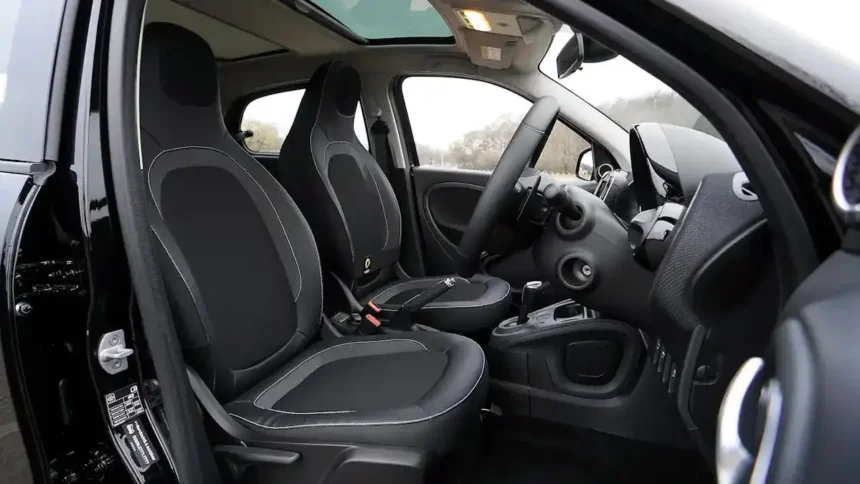As the Automotive Industry continues to evolve, so do the technologies designed to enhance driving safety and convenience. Advanced Driver Assistance Systems (ADAS) have become an essential aspect of modern vehicles, providing features that assist drivers in making informed decisions and improving overall safety on the roads. In 2024, the advancements in ADAS technology are poised to redefine the driving experience.
This article explores the top 5 Advanced Driver Assistance Systems, focusing on their functionalities, benefits, and the impact they have on vehicle safety.
Understanding Advanced Driver Assistance Systems(ADAS): A Brief Overview
Advanced Driver Assistance Systems (ADAS) are technological innovations in modern vehicles designed to automate and enhance vehicle safety and driving functions. From adaptive cruise control to lane-keeping assistance, these systems utilize a combination of sensors, cameras, and artificial intelligence to monitor the vehicle’s surroundings and assist drivers in various driving scenarios. The integration of ADAS technology in cars aims to reduce human error, increase safety, and ultimately pave the way for autonomous driving.
The Importance of ADAS in 2024
As traffic volumes increase and road conditions become more complex, the need for safety features in vehicles has never been more crucial. ADAS tech in 2024 emphasizes proactive safety measures, helping prevent accidents and improve the overall driving experience. With growing concerns about road safety and the rising number of vehicles on the road, these advanced systems are becoming standard in many new vehicles.
Top 5 Advanced Driver Assistance Systems in 2024

1. Adaptive Cruise Control (ACC)
Adaptive Cruise Control is one of the most widely recognized forms of ADAS technology. Unlike traditional cruise control, which maintains a constant speed, ACC automatically adjusts the vehicle’s speed based on the traffic conditions ahead.
- How it Works: ACC uses radar or cameras to monitor the distance between your vehicle and the one in front. If traffic slows down, the system reduces speed accordingly. Once the road is clear, it accelerates back to the preset speed.
- Benefits: This technology helps reduce driver fatigue on long trips, promotes safer following distances, and enhances overall driving comfort.
2. Lane Keeping Assist (LKA)
Lane Keeping Assist is a crucial safety feature designed to prevent unintended lane departures.
- How it Works: LKA utilizes cameras to detect lane markings on the road. If the system senses that the vehicle is drifting out of its lane without a turn signal being activated, it provides corrective steering assistance to guide the vehicle back into the lane.
- Benefits: This system is particularly beneficial during long drives and in high-traffic conditions, reducing the likelihood of accidents caused by driver inattention.
3. Automatic Emergency Braking (AEB)
Automatic Emergency Braking is a life-saving feature that can prevent or mitigate collisions.
- How it Works: AEB systems use sensors to detect obstacles or vehicles ahead. If the system determines that a collision is imminent and the driver has not reacted, it automatically applies the brakes.
- Benefits: AEB is effective in reducing the severity of accidents and is especially useful in urban environments with frequent stop-and-go traffic.
4. Blind Spot Monitoring (BSM)
Blind Spot Monitoring enhances driver awareness by alerting them to vehicles in their blind spots.
- How it Works: BSM systems utilize sensors to detect vehicles in adjacent lanes. When a vehicle is in the driver’s blind spot, the system provides visual or audible alerts to warn the driver.
- Benefits: This feature significantly reduces the chances of lane change accidents, especially on multi-lane highways.
5. 360-Degree Camera Systems
360-degree camera systems provide a bird’s-eye view of the vehicle’s surroundings, making parking and maneuvering easier.
- How it Works: These systems combine multiple cameras placed around the vehicle to create a comprehensive view of the area surrounding the car. The feed is displayed on the vehicle’s infotainment screen.
- Benefits: This technology aids in parking, prevents collisions with pedestrians and obstacles, and enhances overall situational awareness.
The Future of ADAS: What to Expect
As technology continues to advance, the capabilities of ADAS will expand further. In 2024, we can expect improvements in the following areas:
- Enhanced Sensor Technologies: Future ADAS will likely incorporate more advanced sensors, improving detection range and accuracy.
- AI Integration: Artificial intelligence will play a significant role in interpreting data from various sensors and making real-time driving decisions.
- Vehicle-to-Everything (V2X) Communication: The integration of V2X technology will allow vehicles to communicate with each other and infrastructure, further enhancing safety.
FAQs About Advanced Driver Assistance Systems
Q1. What is the main purpose of ADAS?
A: The primary purpose of Advanced Driver Assistance Systems is to enhance vehicle safety, assist drivers in various situations, and reduce the likelihood of accidents.
Q2. Are ADAS technologies standard in all new vehicles?
A: While many new vehicles come equipped with some form of ADAS, the availability of specific features may vary by make and model.
Q3. Can ADAS replace a driver?
A: ADAS technologies are designed to assist drivers, not replace them. Drivers should remain attentive and ready to take control of the vehicle at any time.
Q4. How do I know if my vehicle has ADAS features?
A: You can check your vehicle’s manual or consult the manufacturer’s website to determine which ADAS features are included in your vehicle.
Conclusion
As we move through 2024, Advanced Driver Assistance Systems are becoming increasingly vital for enhancing road safety and improving the driving experience. With technologies like Adaptive Cruise Control, Lane Keeping Assist, Automatic Emergency Braking, Blind Spot Monitoring, and 360-Degree Camera Systems, drivers can navigate the roads with greater confidence. These systems represent the future of car safety, making significant strides toward the eventual goal of fully autonomous driving. As ADAS technology continues to evolve, drivers can expect a safer and more enjoyable journey on the roads.








